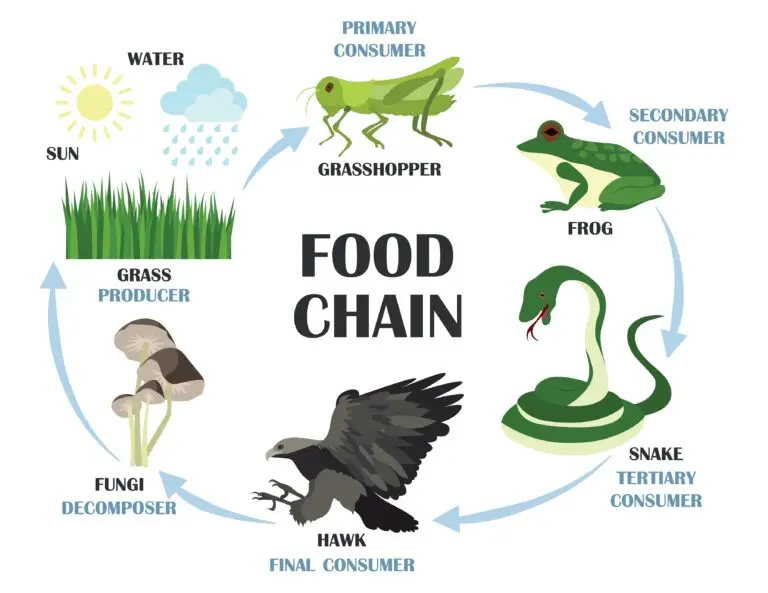Food Chain

Table of Contents
What is a Food Chain?
A food chain is a linear sequence of organisms arranged hierarchically. It represents the transfer of energy and nutrients through the consumption of one organism by another.
It illustrates the flow of energy from the producer, typically a plant or other autotrophic organism, to various levels of consumers, including herbivores and carnivores. Each link in the food chain represents a trophic level, and the chain demonstrates the feeding relationships within an ecosystem.
Key Components of a Food Chain
Producers (Autotrophs)
Producers are organisms capable of photosynthesis or chemosynthesis, synthesizing their food from sunlight, water, and carbon dioxide. Examples include plants, algae, and certain bacteria.
Primary Consumers (Herbivores)
Primary consumers are herbivores that feed directly on producers. They obtain energy by consuming plants or other autotrophic organisms. Examples include grasshoppers, rabbits, and deer.
Secondary Consumers (Carnivores)
Secondary consumers are carnivores that feed on primary consumers. They obtain energy by consuming herbivores. Examples include carnivorous insects, small mammals, and birds.
Tertiary Consumers (Carnivores or Omnivores)
Tertiary consumers are carnivores or omnivores that feed on secondary consumers. They obtain energy by consuming other consumers. Examples include large carnivores, birds of prey, and omnivorous mammals.
Quaternary Consumers and Beyond
The food chain can extend to additional trophic levels, including quaternary consumers. Each level represents organisms that feed on organisms from the level below.
Representation of a Food Chain
A food chain is often represented as a series of arrows indicating the direction of energy flow. The arrows point from the organism being consumed (prey) to the organism consuming it (predator).
Sunlight (Producer) → Grass (Primary Consumer) → Rabbit (Secondary Consumer) → Fox (Tertiary Consumer)
This representation illustrates energy transfer from the sun to producers through subsequent trophic levels.
Food Chain Considerations
Decomposers: Decomposers play a crucial role in breaking down dead organic matter and recycling nutrients. They are not always included in traditional food chain representations but contribute to nutrient cycling.
Trophic Levels: Trophic levels represent the position of an organism in a food chain. Producers occupy the first trophic level, primary consumers the second, and so on. Each trophic level represents a transfer of energy.
Energy Transfer Efficiency: Energy transfer between trophic levels is not 100% efficient. As energy moves up the food chain, some is lost as heat during metabolism and other physiological processes. This results in a pyramid-shaped energy structure, where each successive trophic level has less energy available.
Interconnectedness: In nature, organisms often have multiple food sources, and food chains are interconnected to form more complex food webs. This reflects the dynamic and interconnected nature of ecosystems.
Related Links
Herbivore
Carnivore
Predator
Trophic Levels